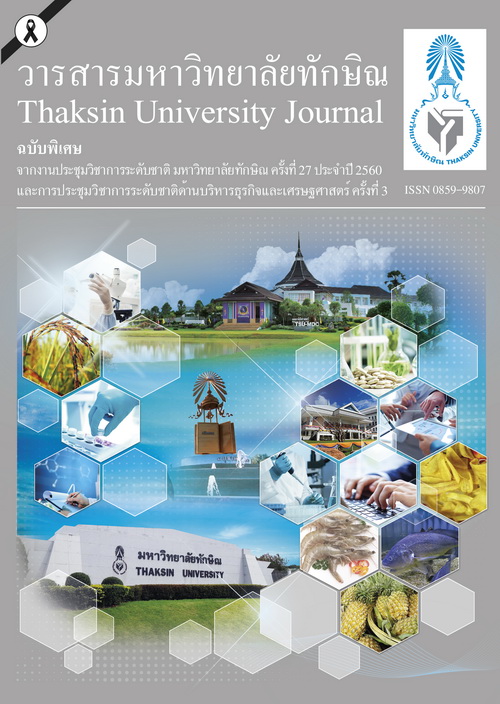The Aroma Properties Measurements of the Sangyod Rice of Phattalung byThe Machine Olfaction
Main Article Content
Abstract
Sangyod rice of Phatthalung province is distinguished rice product which has been registered to “Geographical Indications” or GI. However, the quality of organic rice from the cultivating process and the effects of spatial geographic specificity of Phatthalung province were scientificall in questions. The purpose of this work was to investigate the odor of Sangyod rice depending on the variables of the overall cultivating process and spatial geographic specificity of Phatthalung province using the Electronic Nose or E-Nose. This study was proceeded in three kinds: i) the cultivation in the same area but different in planting processes, i.e., organic and chemical planting methods, ii) the cultivation in different areas but with the same organic planting methods, and iii) different in both cultivation areas and organic planting methods. It was found that all three kinds provide a distinct odor map and the E-nose can distinguish the difference of the Sangyod rice from the planting methods. In addition, it was found that the second kind’s cultivation of the Sangyod rice gave the scent differently in an odor map, the same as the third kind. It is therefore indicates that of the spatial geographic effects and cultivation methods to the Sangyod's vapors that are relatively high. This would result in the chemical compositions within the Sangyod rice which has been strongly correlated to the cropping area and cultivation methods even though in the same province. However, in spatial relationships that significantl implication affected odor vapors must be further in-depth studied to be able to control the quality of the Sangyod rice's organic.

